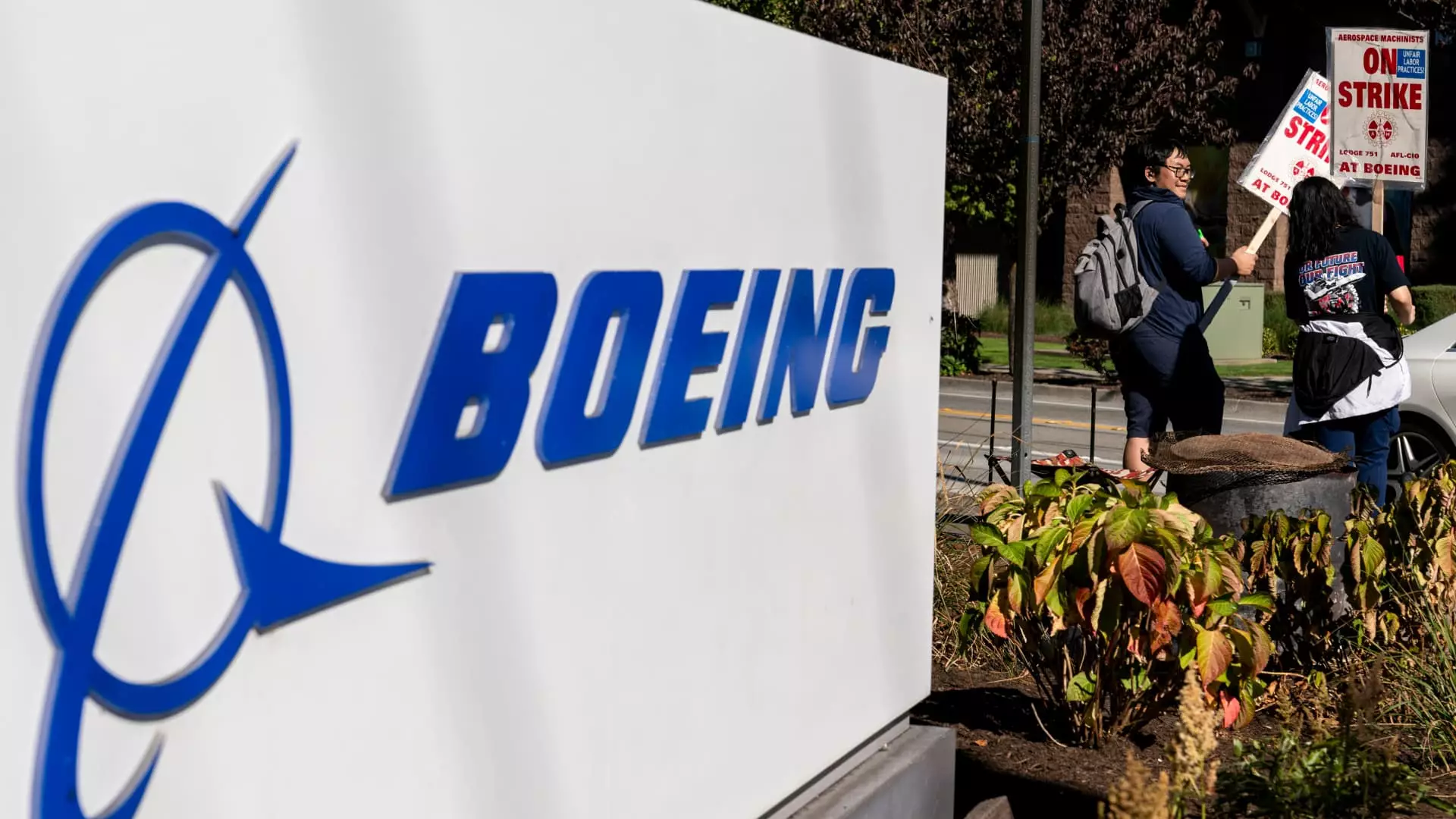Boeing, the aerospace giant, finds itself at a critical juncture as it grapples with operational difficulties and labor unrest. New CEO Kelly Ortberg’s first quarterly earnings call is anticipated to shed light on the direction he plans to steer the company. This moment also coincides with the turbulent backdrop of thousands of striking machinists who are poised to vote on an updated labor agreement. Such pivotal events may significantly shape Boeing’s path forward during an especially tumultuous period.
In light of Boeing’s preliminary results for the third quarter, the company reported revenues of $17.8 billion, reflecting a modest decline of less than 2% compared to the same quarter last year. However, the financial landscape painted a concerning picture, as the company also disclosed a staggering loss of $9.97 per share coupled with a $1.3 billion cash outflow. On a more positive note, Boeing closed the third quarter with $10.5 billion in cash and marketable securities. Yet, the overall scenario poses serious questions about sustainability and future profitability, especially with the aerospace sector facing various challenges.
Labor relations add another layer of complexity to Boeing’s situation. Over 32,000 machinists initiated a strike on September 13 after rejecting a previous labor contract that proposed sizeable raises. The revised offer, featuring a more generous 35% wage increase spread over four years, alongside improved signing bonuses and enhanced 401(k) contributions, has created a glimmer of hope for both the workforce and the company. Analysts suggest that a swift resolution to these labor disputes is crucial, especially considering S&P Global Ratings estimates a cost of approximately $1 billion per month due to the ongoing strike. The outcome of the machinists’ vote, expected late Wednesday night, could ease some of the operational strains if accepted.
CEO’s Vision: Restoring Trust and Efficiency
Kelly Ortberg’s mandate extends beyond navigating financial tumult; he is charged with restoring Boeing’s tarnished reputation following a series of quality control failures and safety concerns. The incident involving a door plug malfunction on an Alaska Airlines 737 Max 9 earlier this year exemplified the safety challenges that continue to plague the company. Looking ahead, Ortberg has indicated intentions to implement significant structural changes, including a potential reduction of 10% of its workforce, to bolster competitiveness. Such moves signal a commitment to making tough decisions necessary for long-term health, although they may face resistance from both employees and the public.
As Boeing stands at the crossroads of labor negotiations and financial recovery, the efficacy of Ortberg’s leadership will be put to the test. The outcomes of the machinists’ vote and the forthcoming quarterly earnings may provide insight into whether the company can regain its footing. Navigating this period of transition requires finesse; success will hinge not only on financial strategies but also on rebuilding trust with employees and stakeholders alike. The coming weeks are critical for Boeing as it seeks to emerge from its current challenges stronger and more resilient than before.


Leave a Reply